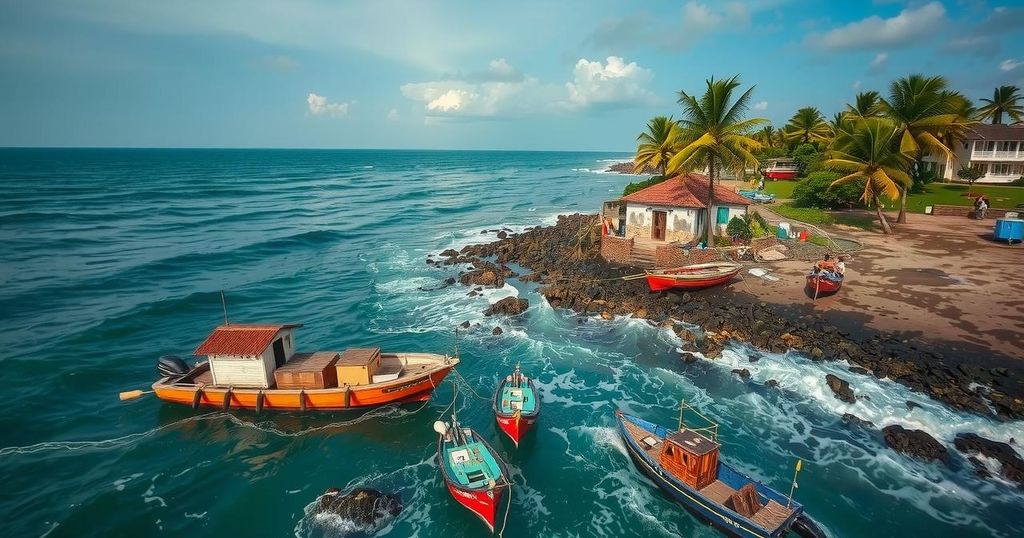Ghana’s Coastal Forts at Risk: A Call to Action Against Climate Change

Ghana’s historic forts are disappearing due to intense tidal waves and coastal erosion, with an estimated loss of two meters of coastline annually. Iconic sites like Fort Prinzenstein and Fort Kongenstein are being submerged, while local communities face extinction. Interventions, including sea defense projects funded by international agencies, aim to mitigate the damage and preserve both the forts and the livelihoods of coastal residents.
Ghana is experiencing significant loss of its historic coastal forts due to destructive tidal waves from the Atlantic Ocean. These forts, which are integral to the country’s heritage, are deteriorating as rising sea levels and coastal erosion threaten both the historic sites and the communities residing nearby. Studies suggest that Ghana loses approximately two meters of coastline each year, with certain areas suffering losses of up to 17 meters. Among the affected landmarks is the 240-year-old Fort Prinzenstein in Keta, which has lost about two-thirds of its structure to the relentless waves. The fort’s caretaker, James Ocloo Akorli, lamented, “Eight of its ten dungeons, originally built to hold enslaved Africans during the trans-Atlantic slave trade, were completely submerged before a sea defense wall was erected to protect what remains of the monument.” Other forts, such as Fort Kongenstein in Ada and Fort Fredensborg in Old Ningo, have succumbed to the ocean’s encroachment, with Fort Kongenstein entirely erased from existence, leaving no remnants to commemorate its history. Community members are also feeling the impact, with residents of Fuveme being forced to relocate after their homes were overrun by tidal surges. Efforts to mitigate this erosion include the construction of the Keta Sea Defence Wall and the West Africa Coastal Areas Resilience Investment Project, a World Bank-funded initiative aimed at bolstering coastal resilience. These actions reflect a critical response to protect not only the fortifications but the coastal populations that depend on them for their livelihoods.
The ongoing issue of coastal erosion in Ghana highlights the broader impact of climate change on historical landmarks and vulnerable communities. With a coastline of approximately 550 kilometers, Ghana faces annual coastline loss primarily attributed to rising sea levels and intensified tidal activity. The forts represent significant chapters in Ghana’s history, particularly regarding the trans-Atlantic slave trade, yet they are now at risk of complete erosion, reflecting a larger trend of cultural and historical losses due to environmental factors. The disappearance of these sites poses a dual threat: it endangers the historical record and threatens the lives of coastal communities, leading to displacement and insecurity.
Ghana’s historic coastal forts are under grave threat from climate change, particularly due to rising sea levels and erosion caused by powerful tidal waves. The loss of these sites not only erases vital aspects of Ghana’s cultural heritage but also endangers the livelihoods and homes of local communities. Efforts are underway to address these challenges through significant infrastructure projects, but the race against climate change remains daunting. Protecting both human and historical legacies in the face of environmental change is now an urgent priority for Ghana.
Original Source: www.rfi.fr






